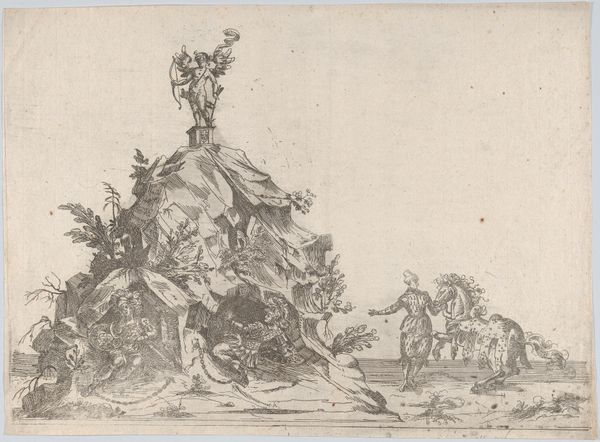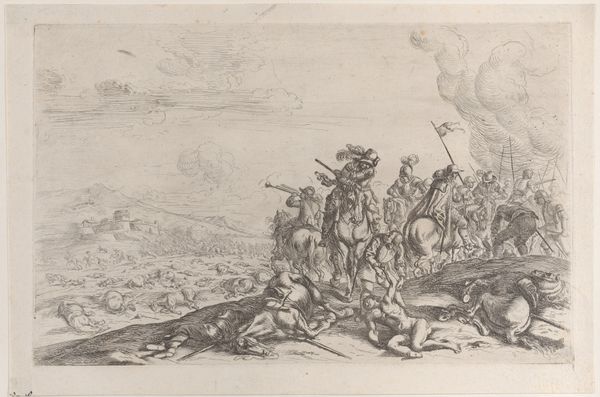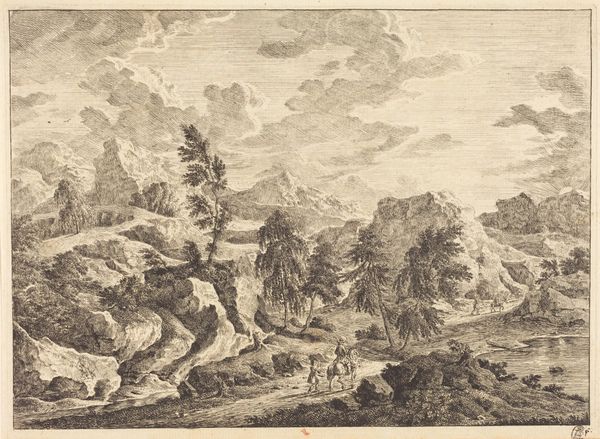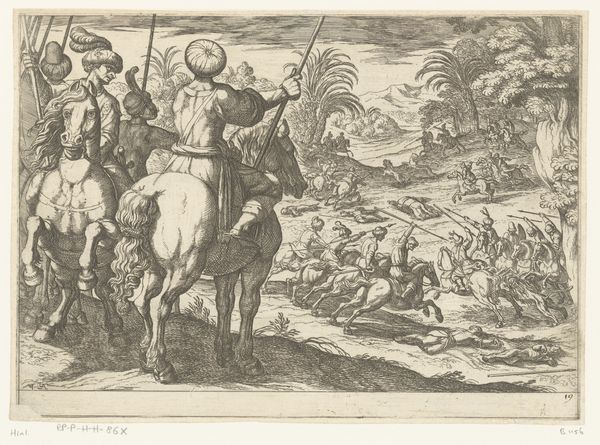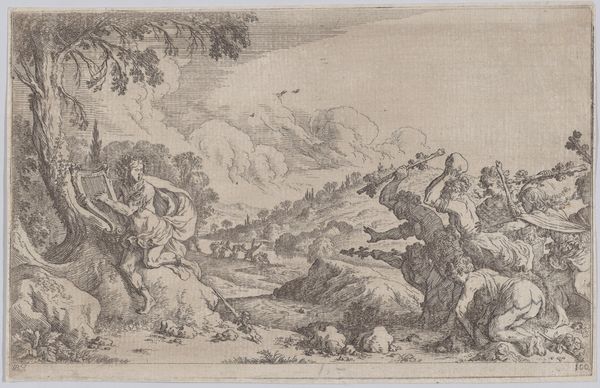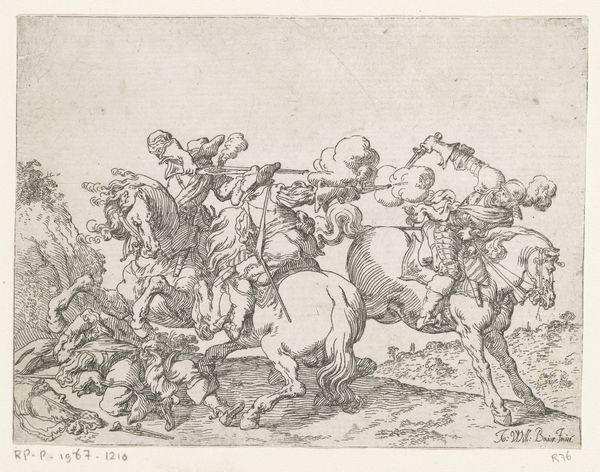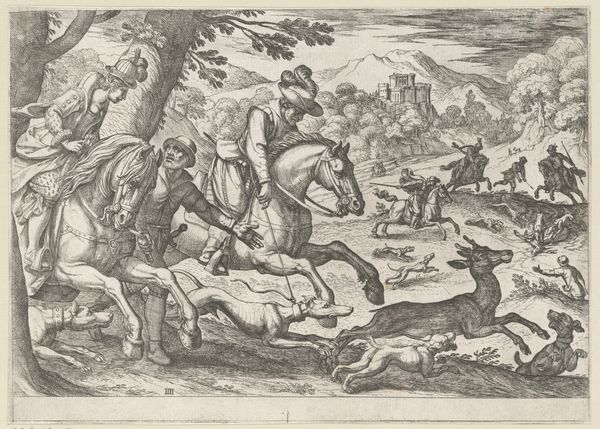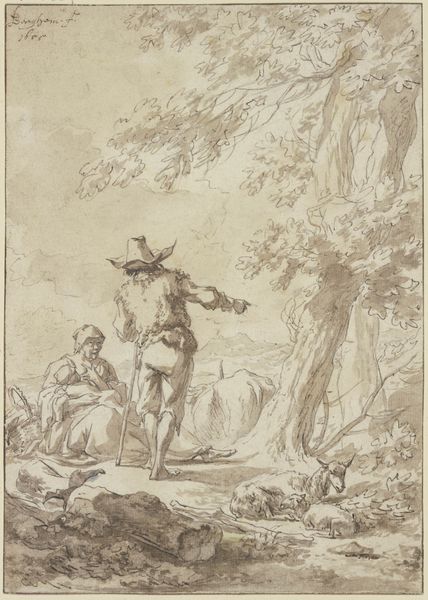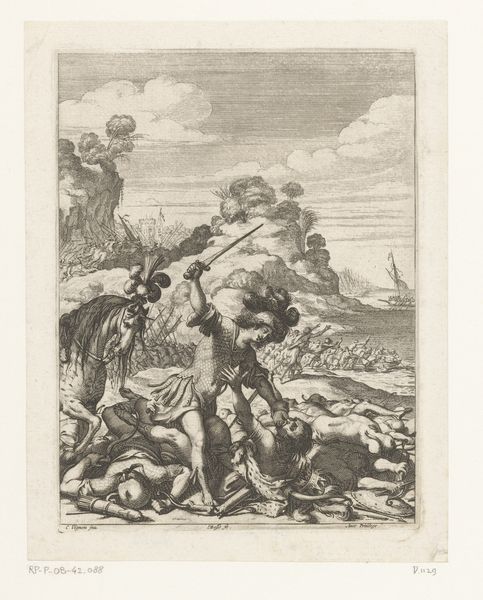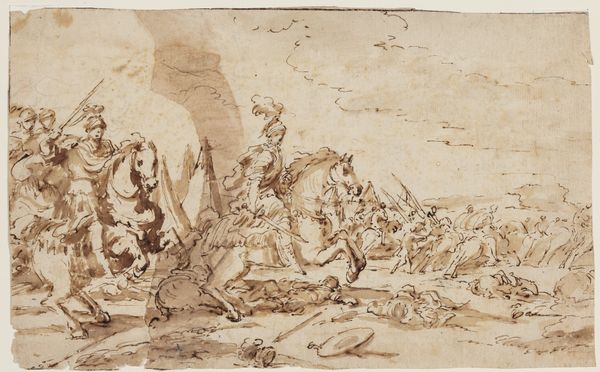
print, etching
#
baroque
# print
#
etching
#
landscape
#
figuration
#
history-painting
Dimensions: sheet: 11.3 x 14 cm (4 7/16 x 5 1/2 in.)
Copyright: National Gallery of Art: CC0 1.0
Curator: So here we have "Capricci di varie battaglie," created around 1635 by Johann Wilhelm Baur. It's an etching, brimming with baroque flair, depicting a chaotic battle scene within a vast landscape. Editor: Immediately, I see a study in contrasts: the poised, almost arrogant rider and steed lording over the absolute mayhem beneath. Is it just me, or is there a sense of detached observation? Curator: That detachment, I think, comes partly from the printmaking process itself. Consider Baur as a craftsman. The lines etched into the metal plate, the acid bath, the precise application of ink—it's a mechanical process translating a human drama. Editor: It's interesting you mention the "mechanical." With history paintings like these, were such images also tools? Meant to bolster military prestige or to offer a subtle critique? Was the "art" made on the field or in the studio? Curator: Definitely both, and that's where the "capricci" or caprice element comes in. Baur wasn't necessarily aiming for historical accuracy, rather, a stirring, emotive scene. Think of it as a form of dramatic stagecraft rendered with etching. Notice how the chaotic landscape swallows the struggling men whole? Editor: And note the class divides being performed. This work screams 'power' – power through the war machine, visible by those literally run over. The production process mimics power dynamics; one wields a tool of creation (etching) while others engage with tools of war. Curator: It's as if Baur's really focused on imbuing a sweeping theatrical drama. Like a director positioning actors across a set, all captured through tiny marks. He understood the impact of visual storytelling and that medium helped him emphasize the horror and the… spectacle. Editor: I leave feeling rather heavy, knowing this piece involved so many people working on a representation of war, all touched by its own act of violence in some way. Even this act of viewing implicates us. Curator: Indeed. “Capricci di varie battaglie” isn't just a depiction of a battle; it's an engagement with its repercussions. That's how he ensures his message has reverberated for almost 400 years.
Comments
No comments
Be the first to comment and join the conversation on the ultimate creative platform.
